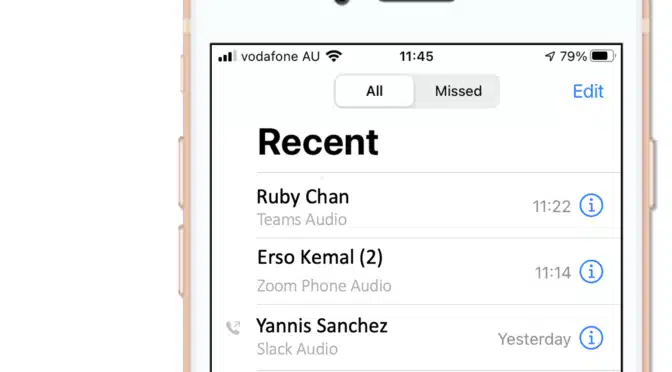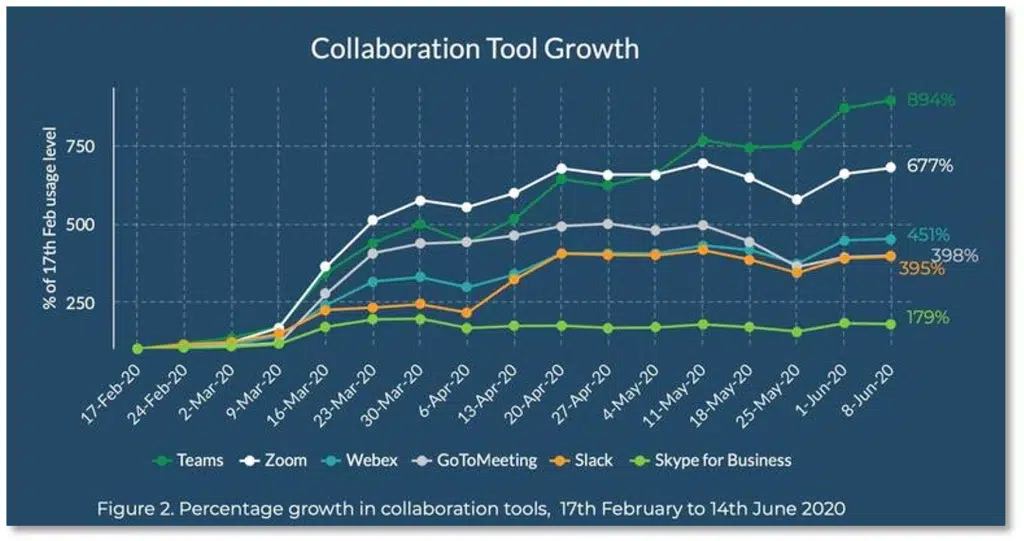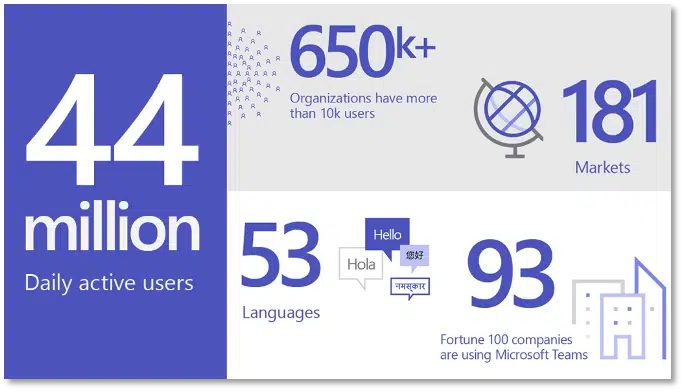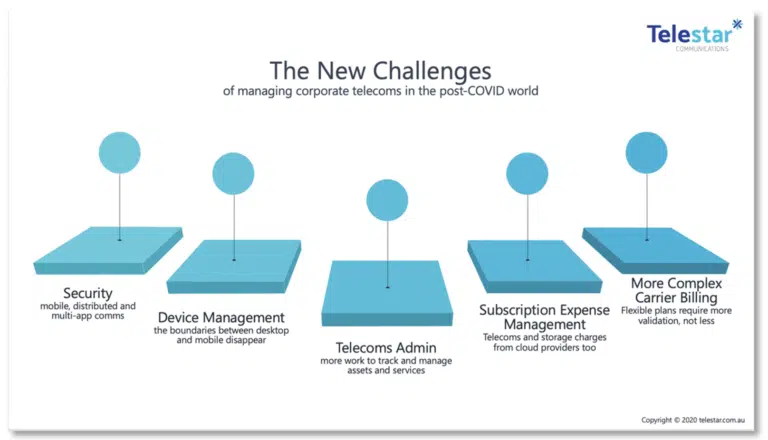
After 150 years, the traditional business phone call might be heading for extinction. Should businesses care?
Strange things are happening in the world of business communications.
COVID-19 has brought into the mainstream various tech tools that have been loved by geeks for years but have not really caught on in most organisations. Until now.
Group collaboration software, a sector pioneered by Slack and originally focused on the software development community, has had the kind of growth usually only seen in a technology tipping point.

Figure 1. Collaboration tool growth. Source: Tech Republic
Collaboration rules
100% of Fortune 500 companies have now deployed collaboration software company-wide.
But almost unnoticed in all this disruption is an important change in user behaviour: the decline of business phone calls.
Non-business call minutes went up during the first months of the pandemic, but business calls unexpectedly went in the other direction. Across surveyed enterprises and governments in the Australian market from March-September 2020, the volume of fixed-line phone calls fell off a cliff, reflecting the exodus from offices. But the volume of mobile phone calls also collapsed (by 36%).^
What happened? Did people just stop talking? Were calls replaced by chat? By text messages? By old-fashioned email?
One clue can be found in the data on collaboration tools. In the same period, calls (both audio and video) on Microsoft Teams grew by 3,000%, with around a quarter of that growth being from Teams on mobile devices. Slack also saw a big increase.

Figure 2. Teams is the fastest-growing business app in Microsoft’s history: even before COVID-19, its statistics were impressive. Source: Microsoft, March 2020.
This is not just a temporary work-from-home phenomenon, as the growth from mobile devices shows. Employees are preferring tools-based calling to regular telephone calls, even when on the move.
There are many likely reasons for this, including: integrated calling, audio and video modes, multi-party calls, easy transition between calls and meetings, centralised corporate address books, presence indicators, in-call chat, in-call file sharing, and (reportedly) better call quality.
And new players are piling in too.
Retiring the Phone app
The prominent “phone” button on smartphones is a large part of why these pocket computers are still called phones, but tech companies see it as just another legacy app, and a replaceable one too.
In an attempt to broaden from meetings into more persistent collaboration areas, Zoom has launched “Zoom Phone”, a richly-featured calling system available from right inside the Zoom app and squarely aimed at business.
Google recently announced that new versions of Android, the world’s #1 mobile OS, will be shipped with a “Phone by Google” app built-in, and able to be set as the default calling app.
Initially, Phone by Google consists of extra features wrapped around a traditional call, but from there it is only a small step to carry the audio too and declare EOL on the traditional phone call.
Since 2017, Apple’s iOS has treated all app-based calls just like traditional calls, showing them in the recent calls and allowing one-touch dialing.
Cloud providers versus Telcos
Microsoft’s approach has been a bit different. Rather than declaring war on the telecommunications carriers, Microsoft has opted to partner with them initially. Calls on Teams are partly carried by Microsoft’s telecoms carrier partners in each country, which has the added benefit of allowing calls in and out of the ‘walled garden’.
But Microsoft is one of the world’s top ten carriers of call minutes already (thanks to its Skype and Skype for Business products), so the current approach may be a market access strategy only, before Microsoft eventually switches to direct relationships and cuts the telcos out.
In the meantime though, corporate telecoms managers need to account for a messy mix of cloud provider fees from the likes of Slack, Zoom, Microsoft and Cisco (and maybe Google), as well as bills from their existing telecoms carriers too.

Figure 3. The high ‘dwell-time’ of employees on collaboration tools since COVID-19 has unexpectedly caused many to embrace in-tool calling as their default communications method, even on mobiles. This is causing a major re-alignment in business positions between the big app providers and telecommunications carriers, resulting in much extra complexity for corporate telecoms managers.
Other areas of traditional business telephony are facing a collision with the cloud too, as even call center systems are migrated to integrated IP-based cloud software. Alternate caller RingCentral last year took effective control of the world’s second-largest PBX provider, Avaya, specifically with this target in mind, while Microsoft’s Teams already includes telephony integrations to call centre systems.
Managing Corporate Telecoms in the New World
From the perspective of a corporate telecoms manager, this is all a mixed blessing. On the surface, it appears to be a threat to job security. Who needs a telecoms manager if the corporate phone bill is just for a few “dumb pipes”?
However, there is much more to consider:

Figure 4. Smaller telecoms bills should be a good thing for enterprises, but the new world is already not that simple. Complex security issues, and more telecoms charges from multiple sources, using varied pricing constructs ranging from contracts to adaptive models to cloud subscription charges, and likely to all require more, not less, close management from organisations.
Life After Phone Calls
Phone calls won’t disappear completely, but the current tipping point in telecommunications should cause a re-assessment by companies. As most organisations grapple with the changes from COVID-19, the opportunities for efficiency gains and cost containment from the new telecoms order can sometimes go unnoticed.
Forward-looking organisations will plan new ways to manage their telecoms and will reap the benefits in improved productivity, better value and continuous improvement.
Other businesses may assume nothing has really changed, sleep-walking into the new telecoms era and paying the price in missed efficiency and savings.
^ As calculated from Telestar analytics surveys, 2020.
* Gartner, 2014-2019.